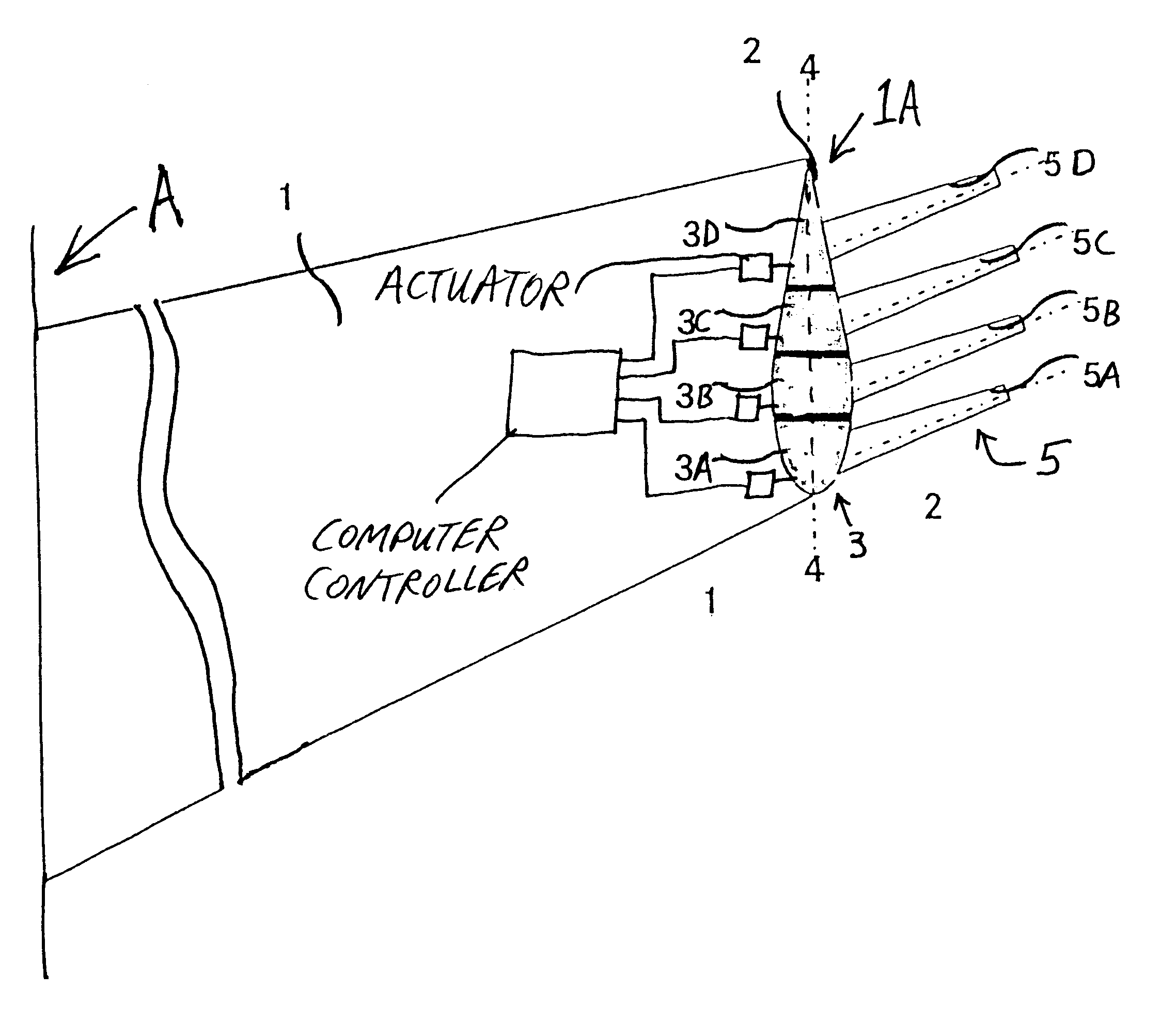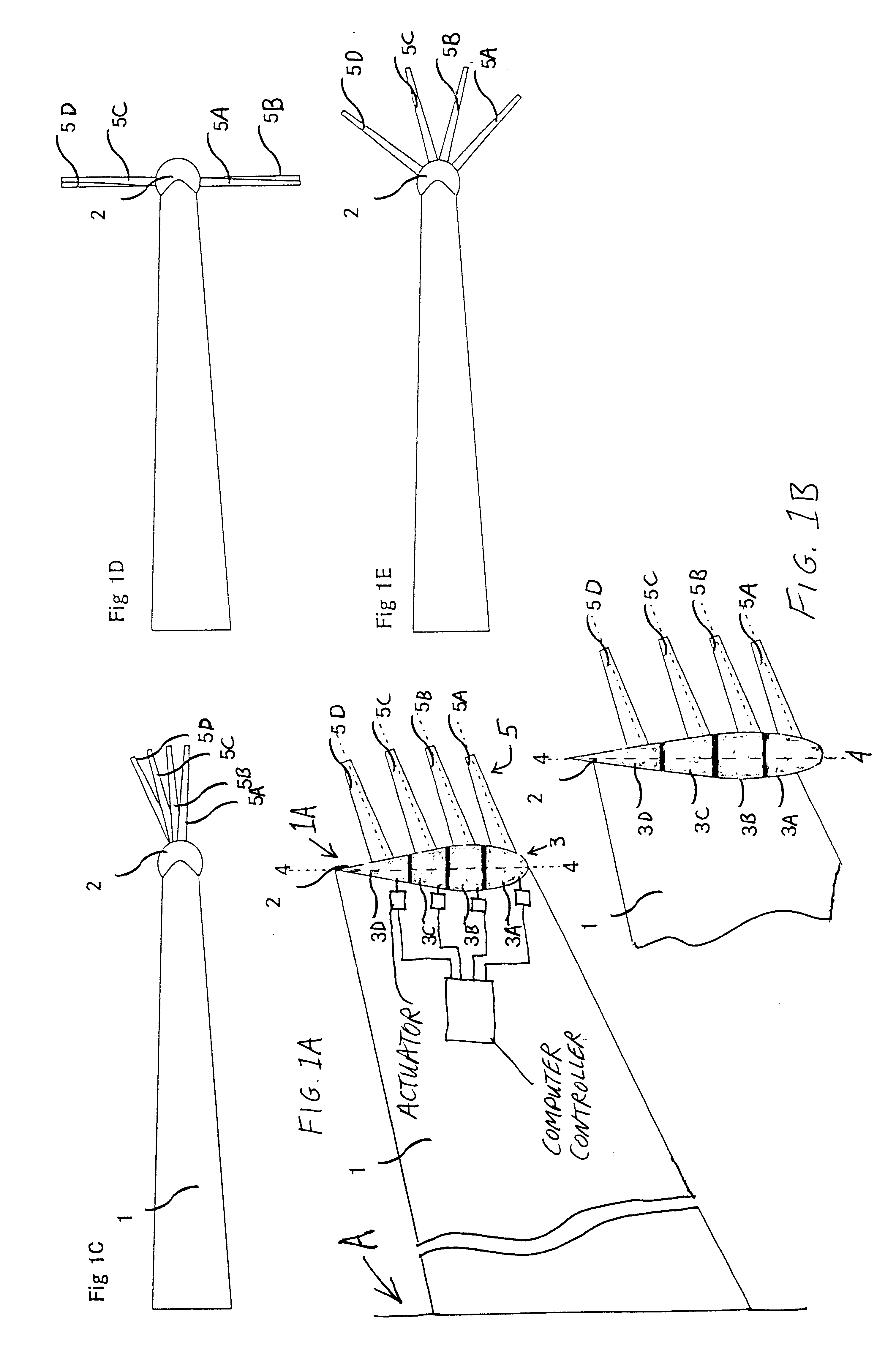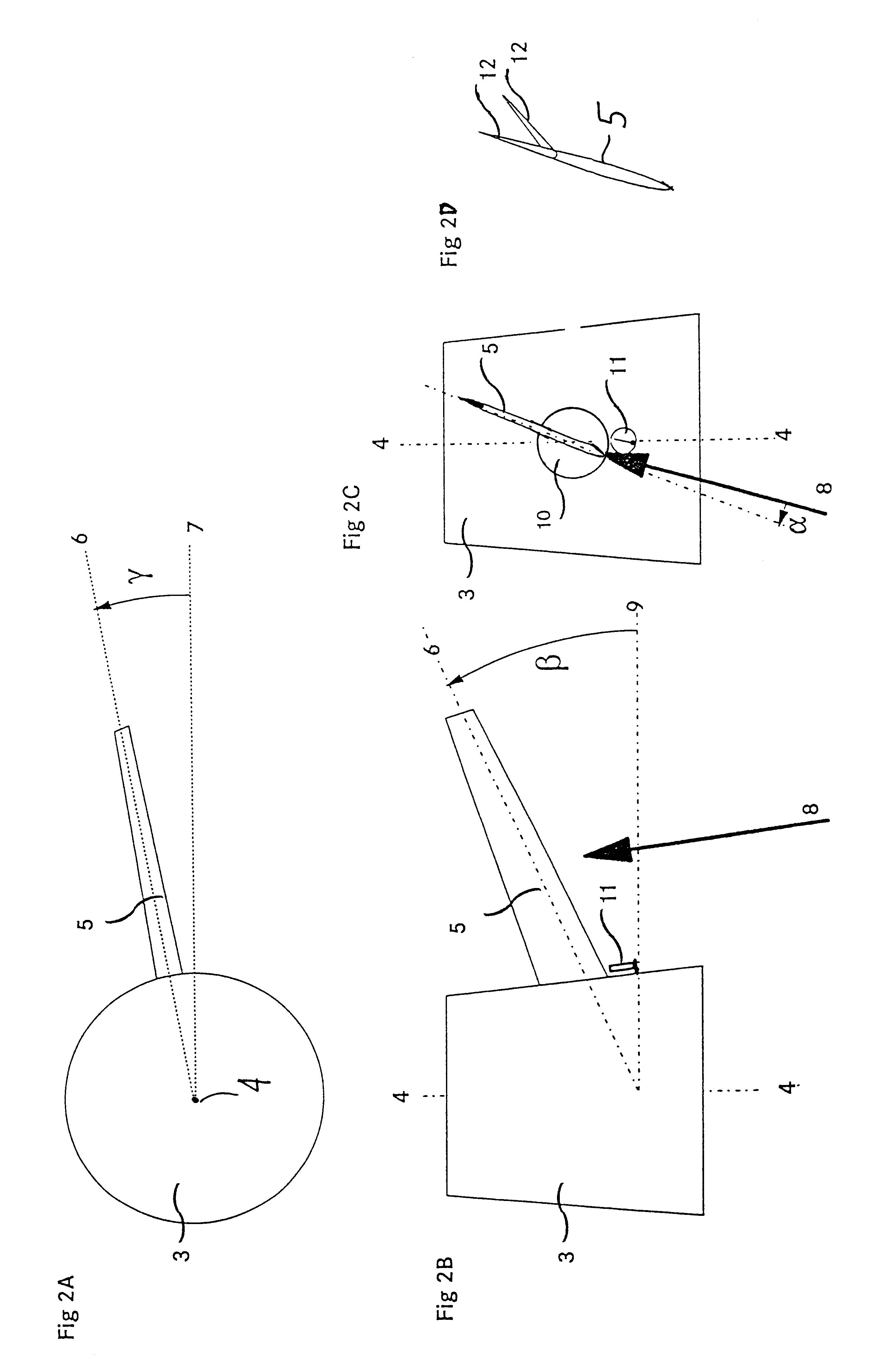Subsonic aircraft with backswept wings and movable wing tip winglets
a technology of wing tip and winglet, which is applied in the direction of wing adjustment, aircraft components, influencers by generating vortices, etc., can solve the problems of reducing the safety risk of following, reducing the span width of aircraft wings equipped with such winglets, and achieving optimal reduction of induced flow resistance at one particular operation
- Summary
- Abstract
- Description
- Claims
- Application Information
AI Technical Summary
Benefits of technology
Problems solved by technology
Method used
Image
Examples
Embodiment Construction
FIGS. 1A and 1B each merely schematically show a portion of a backswept wing 1 of an aircraft A. In FIG. 1A, the aircraft A is schematically indicated, whereby the wingspan length of the wing 1 has been significantly contracted for the sake of a compact schematic drawing. As shown in FIGS. 1A and 1B, a rotation body 2 is mounted at the wing tip 1A of the wing 1. The rotation body 2 overall has a streamlined shape, such as a generally recognized teardrop, torpedo, or bullet shape, with an optimized aerodynamic contour, whereby the maximum thickness of the rotation body 2 may correspond to or be greater than the thickness of the wing 1 at the wing tip 1A.
The length of the rotation body 2 in the aircraft longitudinal direction may correspond to the local wing profile length or chord length as shown in the embodiment of FIG. 1A, or may be greater than the local wing profile length or chord length of the wing 1 as shown in the embodiment of FIG. 1B. In other words, in the embodiment of F...
PUM
 Login to View More
Login to View More Abstract
Description
Claims
Application Information
 Login to View More
Login to View More - R&D
- Intellectual Property
- Life Sciences
- Materials
- Tech Scout
- Unparalleled Data Quality
- Higher Quality Content
- 60% Fewer Hallucinations
Browse by: Latest US Patents, China's latest patents, Technical Efficacy Thesaurus, Application Domain, Technology Topic, Popular Technical Reports.
© 2025 PatSnap. All rights reserved.Legal|Privacy policy|Modern Slavery Act Transparency Statement|Sitemap|About US| Contact US: help@patsnap.com



